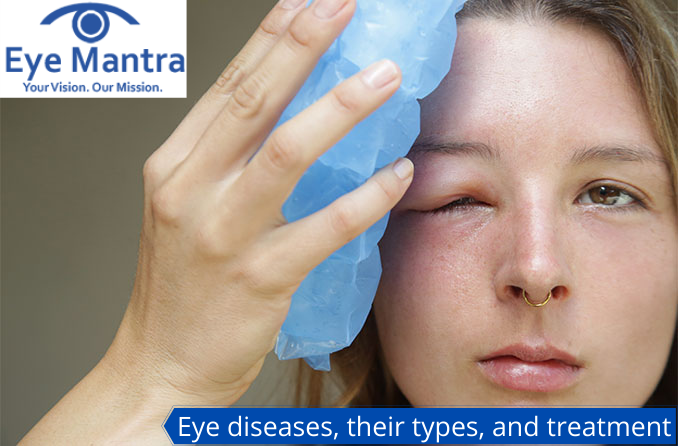Contents
- 1 Eye Diseases And Their Types
- 2 Strain
- 3 Red-eye Diseases
- 4 Conjunctivitis (Pink-eye)
- 5 Dry Eyes
- 6 Lazy Eye
- 7 Strabismus And Squint Eye Diseases
- 8 Night Blindness
- 9 Colour Blindness
- 10 Glaucoma
- 11 Cataracts
- 12 Age-Related Macular Degeneration
- 13 Eye Styes (Sty)
- 14 Myopia
- 15 Presbyopia
- 16 Astigmatism
- 17 Diabetic Retinopathy
- 18 Floaters
- 19 Uveitis
- 20 Retinal detachment or tear
- 21 Keratoconus
- 22 Blepharitis
- 23 Corneal Ulcer
- 24 Eyelid Problems
- 25 Vision Changes
- 26 Problems Associated With Contact Lenses
Eye Diseases And Their Types
All people have had eye diseases at one time or another. Some are minor and even go away on their own or are easy to treat at home. Others need the care of an expert Eye Doctor Delhi.
When it comes to symptoms of eye disease, everyone is blind to the facts. Various surveys have shown that while nearly half of them are worried more about going blind than losing their memory or their ability to walk or hear, almost 30% admitted to not going for regular eye check-ups.
The Anatomy of Eye is quite complex. All parts of an eye must work together to give you a clear picture. Problems or malfunctions in any of those parts may cause many common eye conditions.
Whether your eyesight isn’t now what it used to be, or never was that good, there are things you can do to get your eye health back to 6 by 6 vision.
Check if any of these common problems are hurting you. And always consult with an expert Ophthalmologist if your symptoms are really bad or don’t clear up within a few days.
Let’s look at some of the signs and symptoms of some of the most common eye diseases.
Strain

Anyone who reads for hours at end, works at a computer for long periods or drives long distances, knows about this one. It happens when you overuse and overstrain your eyes. When we need to keep ourselves open and focused for long periods at a stretch. Working for long durations on a Computer or Blue Screen is also called Computer Vision Syndrome. Our eyes get tired and need to rest, just like any other part of our body.
Read more about Computer Effect on Eyes: Causes, Symptoms & Tips for Relief in Delhi.
If your eyes feel strained, let them rest. Give them some time off. If they’re still weary after a good rest, check with Eye Doctor Delhi to make sure it isn’t another problem.
Red-eye Diseases
The Eyes are red. It may be because their surface is covered in blood vessels that expand when they’re inflamed. That makes the eyes red. Eyestrain can be the reason, and so can a late night, a lack of sleep, or allergies. If an Eye injury is a cause, get it checked by your doctor.
Red eyes could be a symptom of some other eye diseases or Eye infections, like conjunctivitis (pinkeye), or damage from being over-exposed to UV rays and not wearing shades over the years. If over-the-counter Eye Drops and rest don’t clear it up, see your doctor.
Conjunctivitis (Pink-eye)
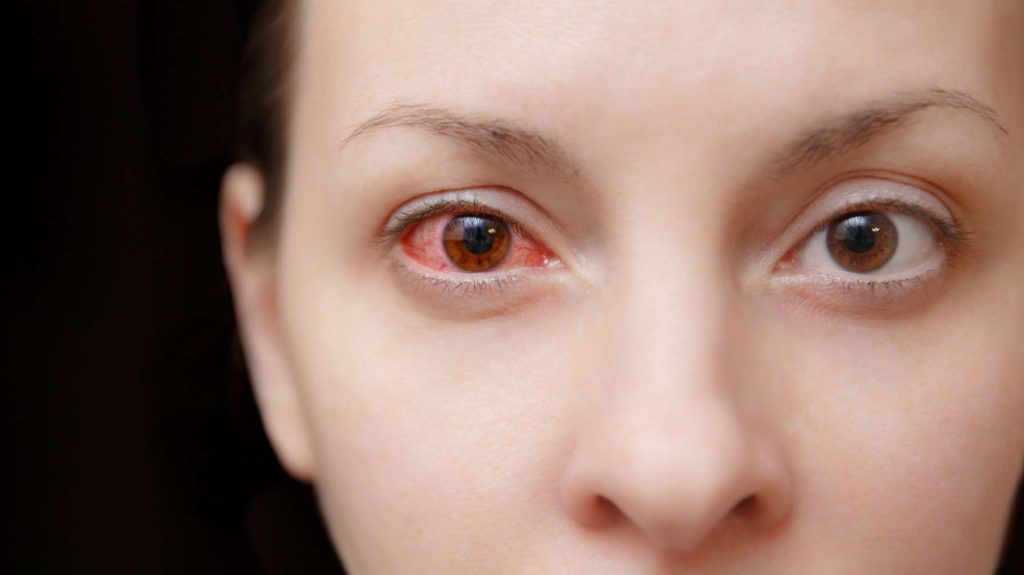
Pink-eye or Conjunctivitis is redness and inflammation of the clear tissue covering the eye and the conjunctiva (inside of the eyelids). It is caused by bacterial or viral infections but, sometimes, maybe due to irritants (chemicals, pollutants, or allergens). Mostly it is caused by viral infections and does not need treatment with antibiotics. Bacterial conjunctivitis can be treated with antibiotic drops or ointments prescribed by your doctor. If a discharge that becomes crusty overnight is causing difficulty in opening the eyelids, a simple warm, wet compress of clean cloth may be applied to the eyes to gently remove the crusting.
Maintain basic hygiene like washing hands frequently, not sharing eye drops, cosmetics, towels, or washcloths will reduce the spread of infectious conjunctivitis.
Dry Eyes
This type of eye disease occurs when our eyes can’t make enough good-quality tears. We feel like some particle is in the eye or as if it is burning. Rarely, in only the most severe cases, extreme dryness can lead to some loss of vision. Some treatments include:
- Buying a good humidifier for your home,
- Special artificial tears that work just like real tears,
- Plugs in the tear-ducts to reduce drainage,
- Lipiflow, (when heat and pressure is used to treat dry eyes),
- Testosterone eyelid cream,
- Nutritional supplements containing fish oil and omega-3.
If your dry eye problem is persistent, you may have dry eye disease. Your doctor could prescribe medicated drops like Cyclosporine (Cequa, Restasis) or lifitegrast (Xiidra) to spur tear production.
Lazy Eye
Lazy eye, or amblyopia, occurs when one eye is not quite developed. Eyesight is weaker in that eye, and it tends to move “lazily” around while the other eye focuses. It rarely affects both eyes. If the symptoms are visible in infants and children, immediate treatment must be sought.
One eye may get hindered by problems such as eyelid droop, tumour, or misaligned eyes (strabismus) that have not been corrected at a young age.
Lifelong vision difficulties and eye diseases can be avoided if a lazy eye is detected and treated in early childhood. Treatment includes using a patch, wearing corrective glasses or contact lenses, and/or other approaches to make a child use the lazy eye.
Strabismus And Squint Eye Diseases
If the eyes aren’t aligned with each other when you look at something, you could have strabismus. This condition is generally known as Squint eyes, Crossed Eyes, or Wall-eye.
This problem doesn’t just go away on its own. You’ll need to consult the Eye Doctor Delhi to get it corrected. There are many modes of treatment available. including Convergence Exercises and vision therapy to make your eyes stronger. Your doctor will examine your eyes to see which treatment would work best for you. If all else fails, Eye Muscle Surgery or Squint Surgery may be required.
Night Blindness
When it is hard to see at night – especially while driving, or when it is difficult to find your way around in dark places, such as movie theatres. These eye conditions are signs of night blindness. Even though it is only a symptom, it is an important sign of many other eye diseases such as Nearsightedness, Cataracts, Keratoconus, and a lack of vitamin A, all cause a type of night blindness that your Eye Doctor Delhi would be able to fix.
Some people are born with this problem, or it might develop from a degenerative disease affecting the retina, and that usually can’t be treated. If you have it, you’ll need to be extra careful while venturing out.
Colour Blindness
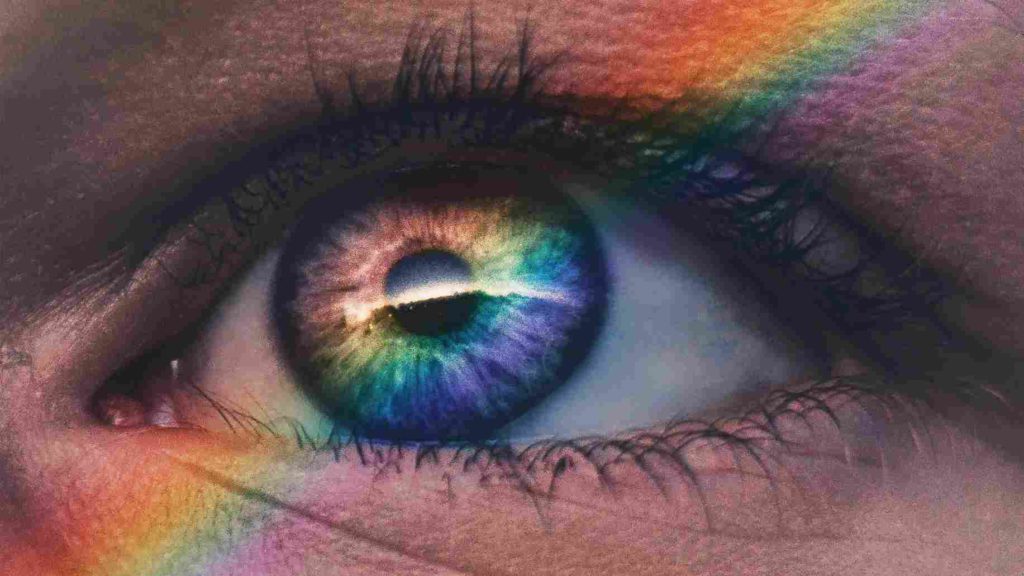
The colours we see are a result of how our eyes (and thereby our brains) decipher different wavelengths of light. People with colour blindness have difficulty in seeing specific colours. Usually the primary ones, reds, greens, and blues. Colour blindness is due to an absence or malfunction of colour-sensitive cells located in the retina. Mostly, this is genetic (people are born with it) but it can also be caused by age, eye diseases, eye trauma, or some medications. If the cause of the colour blindness is hereditary, the problem cannot be corrected but the patient may be trained to adapt to understand colour shades. When you feel the need you must go for a colour blindness test.
Glaucoma
Glaucoma is a group of eye diseases that develop due to an increase in intraocular pressure (IOP) within the eye. Some pressure inside it is normal and safe. The increased pressure harms the optic nerve and may cause vision loss. Glaucoma is classified either as Open-Angle (the more common symptomless and painless form) or Angle-Closure (which often occurs suddenly and is associated with pain and redness of the eye).
Very rarely glaucoma can also be caused by:
- An Eye injury,
- Blocked blood vessels,
- inflammatory disorders of the eye.
Treatment may include Eye Drops or Glaucoma Surgery.
in the early stages of glaucoma, there are usually no symptoms. By the time vision gets affected, the damage is permanent. Progression of glaucoma can be blocked or slowed with eye drops, laser treatments, or surgery. Therefore, early diagnosis is important. Glaucoma is a general cause of blindness. Age, race, class, and family history are important risk factors.
Cataracts
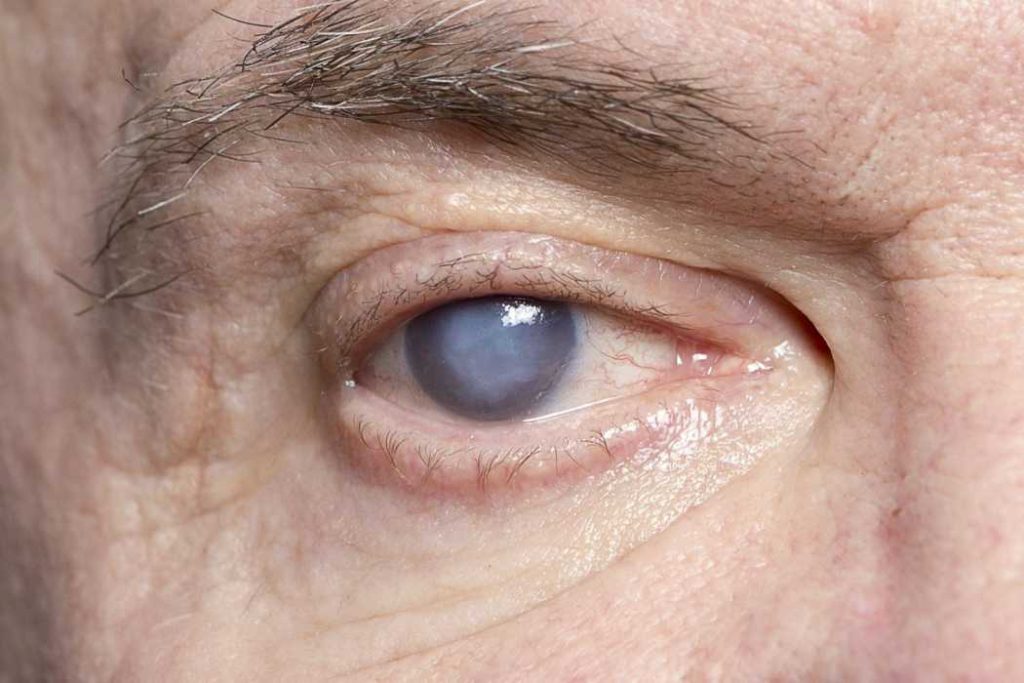
A cataract is a painless cloudy area in the eye lens that causes Blurred Vision. A healthy lens is clear like glass. Light passes through it to the retina — at the back of our eyes and images are formed. When you have a cataract, the light cannot go through as easily. Therefore the patient cannot see as well and may notice glare or a halo around lights at night. The patient does not have pain, redness, or tearing in the eye. Some cataracts stay small and don’t affect your sight.
This blurriness builds slowly and gradually as we age. Most people who live long enough will have some cataract-like changes. Other causes of cataracts include trauma, diabetes, some medications, and excessive UV light exposure.
Your doctor can detect a cataract during a routine eye exam. Treatments include eyeglasses, magnifying lenses, or Cataract Surgery. Under Cataract Surgery, the cloudy lens is removed and replaced with an artificial one. The need for surgery and the risks involved should be discussed with your Eye Doctor Delhi. Know about Phacoemulsification Surgery: Diagnosis, Process, Benefits & Risks
Age-Related Macular Degeneration
AMD or Age-related macular degeneration progressively destroys the macula, the central part of the retina that helps with focus. This disease causes blurry vision, particularly in the centre of the field of view. Rarely causing total blindness as only the centre of vision is affected. This condition is most common in people over 60 years of age, causing blindness and vision loss. Though it can onset at any age.
There are two types of AMD: Wet & Dry. in Wet AMD, abnormal blood vessels behind the retina start to grow, leaking fluid and blood, causing loss of central vision. It may occur quickly. Whereas, in Dry AMD, the light-sensitive cells in the macula slowly break down causing central vision to decline over time.
Eye Styes (Sty)
A Stye (also spelled Sty) is an infection of the oil gland at the edge of an eyelash. It is visible as a red, raised pimple on the base of the eyelid. Symptoms of Eye Styes are pain, tenderness, redness, and swelling with a small lump. The eyeball itself may feel irritated or as if some particle is scratching it due to the swelling of the eyelid.
Treatment for a Stye includes warm compresses applied to the affected area for 10 minutes, up to six times daily. If the Stye comes to a head and drains pus, it should be cleaned gently with soap and lukewarm water. This rupture usually leads to the end of the Stye. If the Stye is very painful, large, or affecting your vision, see your Eye Doctor Delhi immediately.
Myopia
Also known as Nearsightedness. Under Myopia, faraway objects appear blurry while the close objects are clear. This is one of the conditions of Refractive Errors, which is when the light doesn’t get focused properly on our Retina. Nearsightedness is caused by the cornea having too much curvature, resulting in problems with focusing on the retina.
Myopia is usually inherited, extremely common, and often discovered in childhood. It often progresses throughout the teenage years when the body has rapid growth. It is easily corrected with eyeglasses, contact lenses, or surgery.
Hyperopia (Farsightedness) (h2)
Under this condition, close objects look more blurry than distant objects. There is difficulty focusing on close objects. It is quite common and the prevalence increases with age. in this condition, the cornea is abnormally flat and does not allow light to sharply focus on the retina.
Just like the above Refractive Error, Hyperopia can also be inherited. Children often have hyperopia, which may lessen in adulthood. in mild cases of Hyperopia, distant vision is clear while near vision is blurry. in more advanced hyperopia, sight can be affected for all distances.
Glasses, contact lenses, or surgery may be prescribed to improve Hyperopia.
Presbyopia
This is another type of Farsightedness (Hyperopia) and one of the Refractive Error eye diseases. Presbyopia is caused when the centre of the eye lens becomes more rigid. Due to the ageing of the lens in the eye, after age 40, the lens of the eye hardens and does not flex as easily. Resultingly, the eye loses its focusing ability and it becomes difficult to read or work at close range. This normal ageing process of the lens can also affect patients with Myopia, Hyperopia, or Astigmatism.
This condition may show up as early as the age of 35. eventually affecting almost everyone. Eyeglasses or contact lenses may be prescribed to improve the condition.
Astigmatism
This condition usually occurs when the cornea, the front surface of the eye, has an asymmetric curvature. Generally, the cornea is smooth and evenly curved in all directions That is how the light entering the cornea is focused equally on all planes, or in all directions. in this type of Refractive Error, the front surface of the cornea is curved more in one direction than in another. This abnormal curvature of the cornea can cause two focal points to fall in two different locations. It may result in a vision that is similar to looking into a distorted, wavy mirror. This makes objects at a certain distance appear blurry. However, usually, Astigmatism causes blurred vision at all distances.
This disease may strain the eye and may be combined with Nearsightedness (Myopia) or Farsightedness (Hyperopia). Eyeglasses, contact lenses, or surgery may help to correct or improve the condition.
Diabetic Retinopathy
This is a diabetes complication that affects the eyes. It can develop in anyone with Type 1 or Type 2 Diabetes. If you have had diabetes for a long and the blood sugar is not much controlled, you are more likely to develop this eye complication.
Diabetic Retinopathy is damage to the blood vessels and the light-sensitive tissue of the retina caused by diabetes. At first, diabetic retinopathy may cause nil or only mild vision problems. Later on, there may be blurred or dark spots in the field of vision. Eventually, it can lead to blindness. The best way to avoid these eye diseases is to keep the blood sugar level under control. And get your eyes checked annually for a dilated eye exam. Good Eye Care can lessen complications.
Floaters
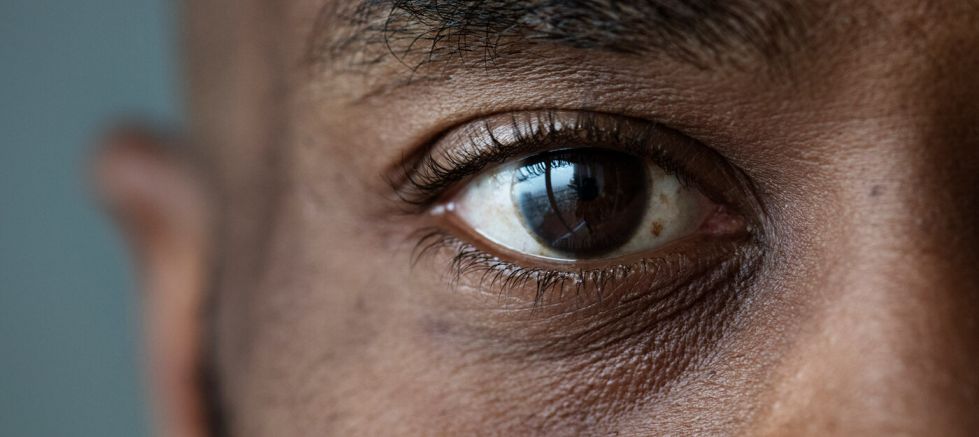
Eye floaters are those tiny spots, flecks, specks, and “cobwebs” that float aimlessly around in your field of vision. While disturbing, ordinary eye floaters and spots are quite common and usually are not a cause for alarm. Floaters are caused by changes in the vitreous jelly of the eye.
Floaters and flecks would appear when tiny pieces of the eye’s gel-like vitreous break lose within the inner back portion of the eye.
Up until our young age, the vitreous has a gel-like consistency. But with age, the vitreous begins to dissolve and liquefy and a watery centre gets created. Some undissolved gel particles will float around in this watery centre of the vitreous, infrequently. These particles can take on any size or shape to become what we refer to as “eye floaters.”
These spots are particularly pronounced if you gaze at white or light-coloured background. You’ll also notice that these spots never seem to stay still when you try to focus on them. They move when your eye and the vitreous gel inside the eye moves, creating the impression that they are “floating.” Shadows from these specks are cast on the retina as light passes through the eye, and those tiny shadows are what you see.
Noticing a few floaters, sometimes, is not a cause for concern. Generally, they do not cause blindness and are mostly harmless. However, if you see a shower of floaters and spots, especially if they are accompanied by flashes of light and/or pain, you should seek medical attention immediately.
Uveitis
This is the name for an assortment of eye diseases that cause inflammation of the Uvea. These eye diseases can destroy tissues surrounding the eye, and even cause eye loss. Uvea is the middle layer of the eye that holds most of the blood arteries and vessels. They feed the various parts of the Eye.
Uveitis may be caused by trauma or injury to the eye, infections, or rheumatologic or inflammatory diseases that affect other parts of the body. People with immune system conditions like Rheumatoid Arthritis, AIDS, or Ulcerative Colitis are more likely to have Uveitis. People of all ages can have these eye diseases. Signs may go away quickly or last for a long time.
The main symptom is Eye Pain. Below symptoms may also accompany it:
- Blurred vision,
- Redness,
- Sensitivity to light.
Different types of Uveitis Eye Diseases call for different treatments. See your Eye Doctor in Delhi if you have these symptoms and they don’t go away within a few days. Antibiotics or anti-inflammatory drops, along with pain medications may be prescribed.
Retinal detachment or tear
When the retina gets detached from the back of the eye, its underlying structures, it’s called Retina Detachment. This is an emergency. You must contact an ophthalmologist right away to save your vision.
Retinal Detachment or Tear describes a situation in which a thin layer of tissue (the retina) at the back of the eye pulls away from its normal position. A kind of fluid behind the retina keeps it separate from the back of the eye. The retinal cells get disconnected from the layer of blood vessels that provides oxygen and nourishment.
A detached retina doesn’t cause pain. It can occur with no warning at all. Some indications of Retinal Detachment may be:
- Partial or complete loss of vision,
- The sudden appearance of floaters,
- Darkening of the Peripheral Vision,
- Flashes, and
- Blurred vision,
- or as if a curtain was drawn over your visual field.
The risk is high for a severely nearsighted adult age 25 to 50, or an elderly person after cataract surgery, or those with a family history of retinal detachment. The treatment involves surgery, mostly using lasers, that can improve vision affected by the retinal detachment. The longer retinal detachment goes untreated, the greater your risk of permanent vision loss in the affected eye.
Keratoconus
Our cornea is a clear surface covering the front of the eye. It is typically smooth and round, following the shape of the eyeball. Weakness in the cornea can lead to pressure in the eyeball, causing a conical-shaped abnormal bulge to the front of the eye. Keratoconus is when the cornea becomes thin and protrudes like a cone. Due to the change in the shape of the cornea light rays go out of focus. Making the vision gets blurred and distorted. Performing daily tasks like reading or driving hard. Focusing gets tough even with the help of glasses or contact lenses.
The causes of Keratoconus are not known. Around 10% of cases appear to be genetically passed. Keratoconus has also been linked with eye allergies and excessive eye rubbing.
Keratoconus can also complicate procedures of certain eye surgeries.
Treatments available are rigid contact lenses or Corneal Transplant.
Blepharitis
This disease is an infection, redness or pain in the eyelids. The inflammation can be there on the outer (anterior) or inner (posterior) eyelid. The symptoms may be burning, itching, swelling, flaky skin at the base of the eyelashes, crusting of the eyelids, tearing, or blurred vision.
It can be caused by:
- Excess growth of bacteria which is normally found on the skin,
- A hormone imbalance,
- An inflamed or blocked oil gland at the base of the eyelid,
- Allergies.
Prevention and treatment of blepharitis include good eyelid hygiene, including frequent cleaning, light scrubbing, using a mixture of water and baby shampoo. Severe cases may require antibiotics or steroids.
Corneal Ulcer
A corneal ulcer is a small ulcer (crater) on the front part of the eye, usually due to an infection. It can be caused by bacteria, viruses, or it may be a fungal eye infection. Those wearing contact lenses are at higher risk for corneal ulcers because these infectious agents may get trapped behind a lens.
Symptoms of a corneal ulcer include intense redness, pain, feeling as if the eye is scratched or some particle is in the eye, sensitivity to light, and blurry vision. If you wear contact lenses, have the symptoms, and suspect a corneal ulcer, see your Eye Doctor in Delhi immediately. The treatment available for this condition is high potency antibiotics and pain medications.
Eyelid Problems
Our eyelids protect our eyes, spread tears over their surface, and limit the amount of light that can get in. They do a lot for our eyes. Pain, tearing, itching, and sensitivity to light are common signs there is some problem with our eyelid. One might also experience blinking spasms or inflamed outer edges near the eyelashes. Treatment would be proper cleaning, medication, or surgery.
Vision Changes
As we age, we find that we can’t see as clearly as before. This is quite normal. We most probably need glasses or contacts. Else, there is the option to have LASIK or Spec Removal surgery to correct the vision. If you already wear glasses or contacts, you may need a stronger prescription. Other, more serious eye diseases may also appear with age. Eye diseases like Macular Degeneration, Glaucoma, and Cataracts, can cause problems in eyesight and vision.
Symptoms do not vary a lot among these disorders, so it is best to get your eyes examined regularly. Any vision change can get risky and need immediate medical care. Anytime you have a sudden loss of vision, or everything looks blurry — even if it’s temporary — see a doctor right away.
Problems Associated With Contact Lenses
Contact Lenses work well for many people, but you need to take very good care of them. Wash your hands thoroughly before touching them. Follow the care guidelines that come with them.
And follow these rules:
- Never wet them by putting them in your mouth. That is more likely to infect them.
- Make sure your lenses are a proper fit, so they don’t scratch your eyes.
- Use only those eye drops that say they’re safe for contact lenses.
- Never make saline solutions at home. Even though some lenses are approved for sleeping in them, doing so raises the risk of infection.
Take care of your eyes to protect your eyesight. Always wear sunglasses to protect your eyes from UV rays and use eye protection to avoid injuries. People over 40-years should have their eyes checked every 2-years and those over 60-years should have their eyes checked annually.
If you do everything right and still have problems, see your eye doctor instantly. Be proactive in your eye health. If you notice any symptoms of the eye diseases discussed above, book an appointment with EyeMantra Today.
Call +91-9711115191 Now to book an appointment. Or email at [email protected].
We offer various services like Retina Surgery, Cataract Surgery, Specs Removal, and many more.
Related Articles:
Best Tips for Eye Care in Pollution

